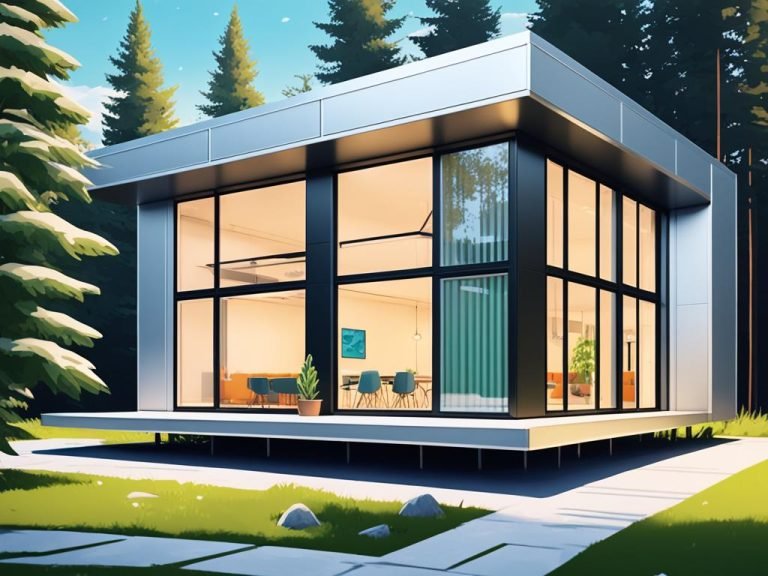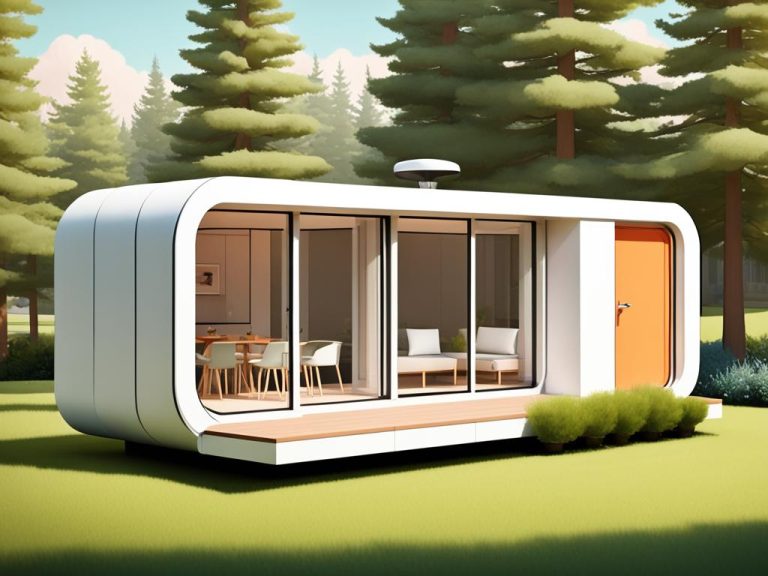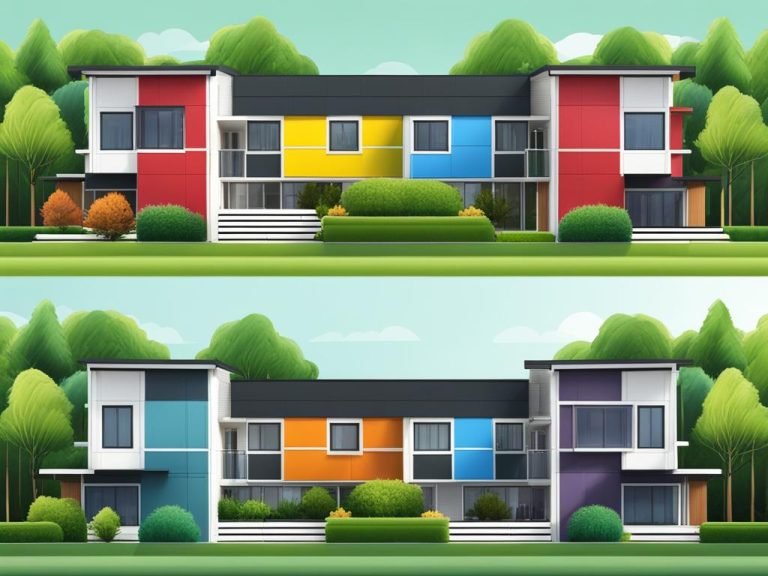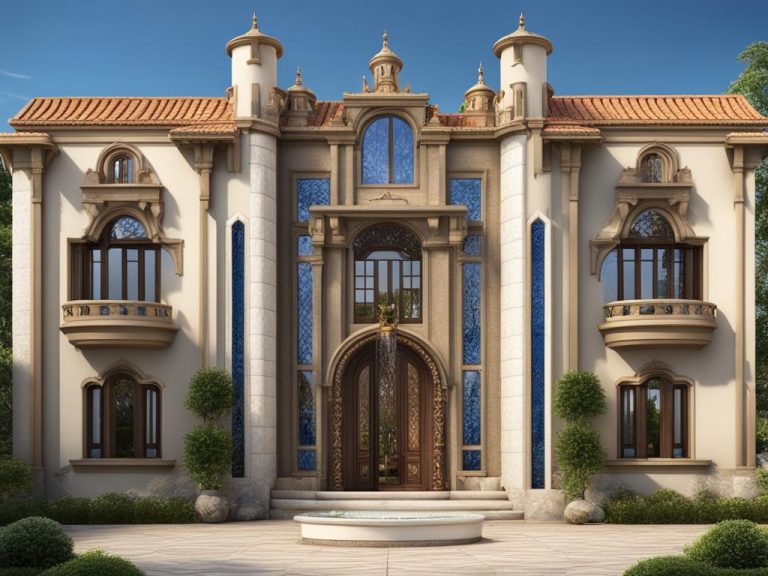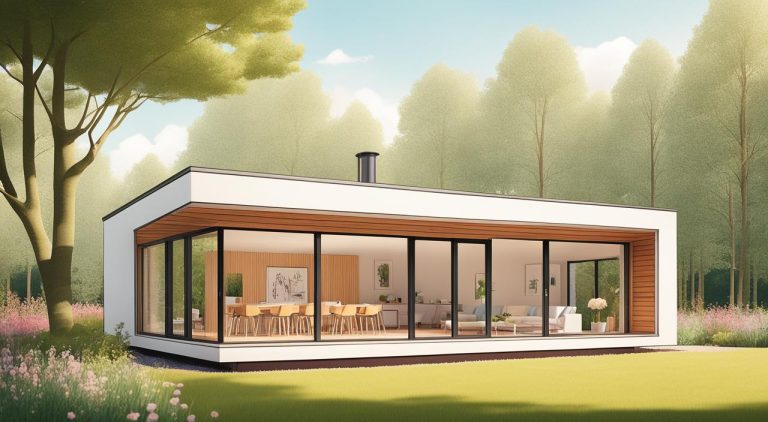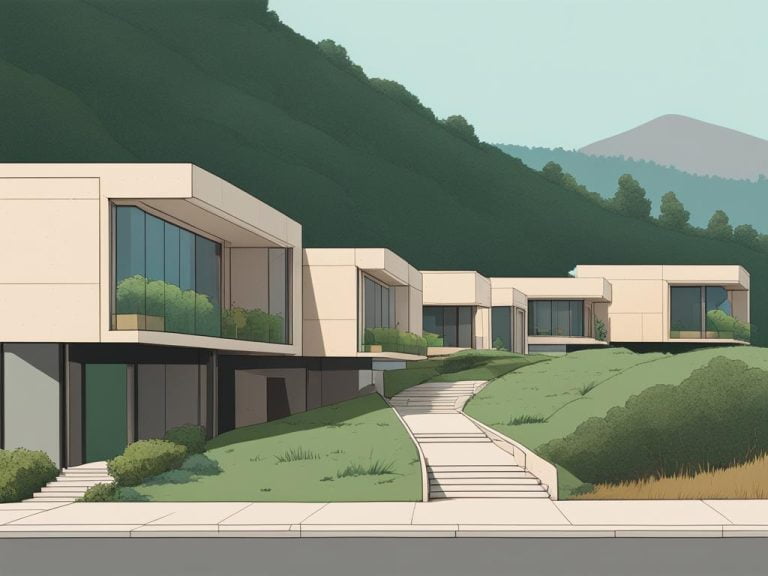An Eco-Friendly Carbon Neutral Prefab Home
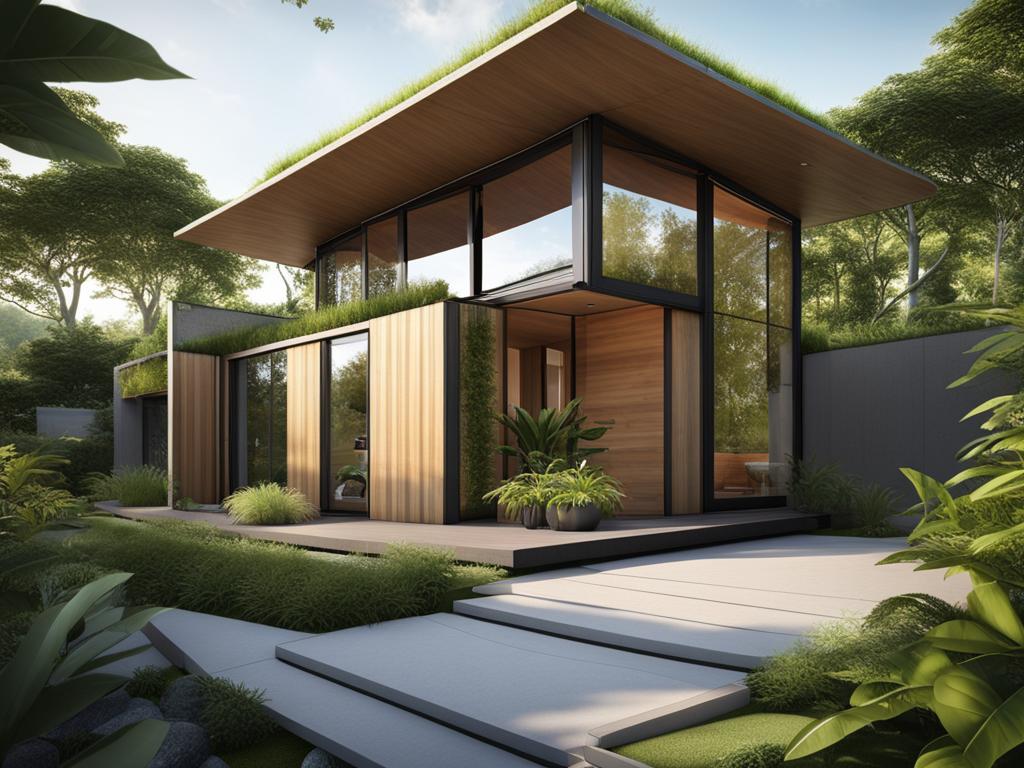
Carbon-neutral prefab homes have emerged as an innovative solution to meet the growing demand for sustainable living options. These homes are constructed off-site in a controlled factory environment, offering benefits such as shorter construction time, cost-effectiveness, and consistent quality. The integration of carbon-neutral features, including energy-efficient insulation, solar power, and smart home technology, makes these homes environmentally friendly and provides advantages such as reduced energy costs, incentives and rebates, and enhanced resale value.
Key Takeaways
- Carbon-neutral prefab homes offer an eco-friendly and sustainable housing option.
- These homes are constructed off-site, resulting in shorter construction time and cost-effectiveness.
- Energy-efficient insulation, solar power, and smart home technology are integrated into these homes, reducing energy costs and carbon emissions.
- By embracing carbon-neutral living, we can create a greener and more sustainable future.
The Rise of Prefabricated Homes
Prefabricated homes, also known as prefab or modular homes, are revolutionizing the construction industry. These homes are constructed off-site in a controlled factory environment and then transported to the home site for assembly. The rise of prefab homes has created new opportunities for accelerated construction and cost-effective housing solutions.
One of the key advantages of prefab homes is their shorter construction time compared to traditional on-site construction. By utilizing the controlled environment of the factory, the construction process is streamlined, resulting in faster completion times. This not only saves time but also reduces the inconvenience caused to homeowners during the construction process.
Another major benefit of prefab homes is their cost-effectiveness. The off-site construction allows for reduced labor and material costs, as well as minimized waste. Additionally, the economies of scale achieved through the mass production of prefab homes further contribute to their affordability. These cost savings make prefab homes an attractive option for those seeking affordable housing solutions.
Prefab homes also offer consistent quality and precise construction. The controlled factory environment ensures that every aspect of the construction process is closely monitored and executed with precision. This results in homes that adhere to high-quality standards and meet stringent building codes.
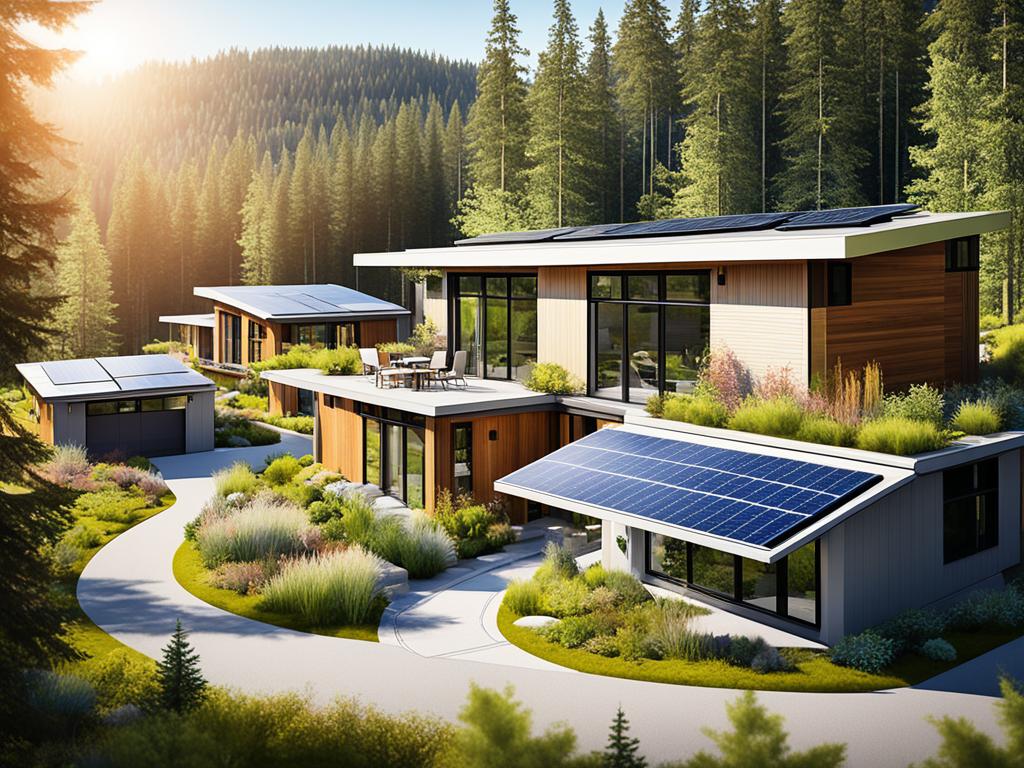
In summary, the rise of prefab homes has brought significant advancements in the construction industry. Prefabricated homes offer accelerated construction, cost-effectiveness, and consistent quality. These homes are an excellent choice for those looking for modern, sustainable, and affordable housing solutions. As the demand for prefab homes continues to grow, they are undeniably shaping the future of the housing industry.
The Carbon-Neutral Advantage
Carbon-neutral prefab homes are designed to minimise their carbon footprint throughout the entire lifecycle. These homes are built with energy-efficient features such as superior insulation, high-performance windows, and energy-efficient appliances. Solar panels integrated into the design allow these homes to generate their electricity, reducing reliance on traditional power grids and significantly reducing carbon emissions.
Smart home technology, including intelligent thermostats and lighting systems, optimises energy consumption and further reduces the environmental impact. The integration of carbon-neutral features in prefab homes not only makes them eco-friendly but also provides benefits such as reduced energy costs, incentives and rebates, and increased resale value.

With their energy efficiency and solar power capabilities, carbon-neutral prefab homes are leading the way in reducing carbon footprints. By utilising sustainable materials and advanced technology, these homes contribute to the global effort of carbon footprint reduction. Energy-efficient insulation, smart home technology, and solar power generation work together to minimise energy consumption and decrease reliance on non-renewable energy sources.
The Benefits:
- Reduced energy costs
- Incentives and rebates
- Increased resale value
- Environmentally friendly
- Minimised carbon emissions
By opting for carbon-neutral prefab homes, homeowners can enjoy the advantages of a sustainable living environment while making a significant impact in reducing their carbon footprint. These homes not only prioritise energy efficiency and sustainability but also provide a comfortable and modern living space for individuals and families alike.
The Future of Housing
The prefabricated housing market is poised for rapid growth in the coming years, driven by advancements in technology and the increasing demand for sustainable housing solutions. These advancements will revolutionize the industry, offering more customizable designs, improved energy efficiency, and seamless integration of renewable energy strategies in prefabricated homes.
As the world grapples with the urgent need to address climate change and reduce greenhouse gas emissions, carbon-neutral prefab homes are emerging as a crucial component in achieving sustainability goals. By adopting these homes on a wider scale, we can significantly reduce our environmental impact and make meaningful progress towards a greener future.
Moreover, the prefabricated housing market provides an answer to another pressing issue – the need for affordable housing solutions. With the rising cost of living, housing affordability has become a critical challenge for many. Prefabricated homes offer a cost-effective alternative by streamlining the construction process, reducing labor and material costs, and minimizing waste. This makes them an attractive option for those seeking affordable and high-quality housing.
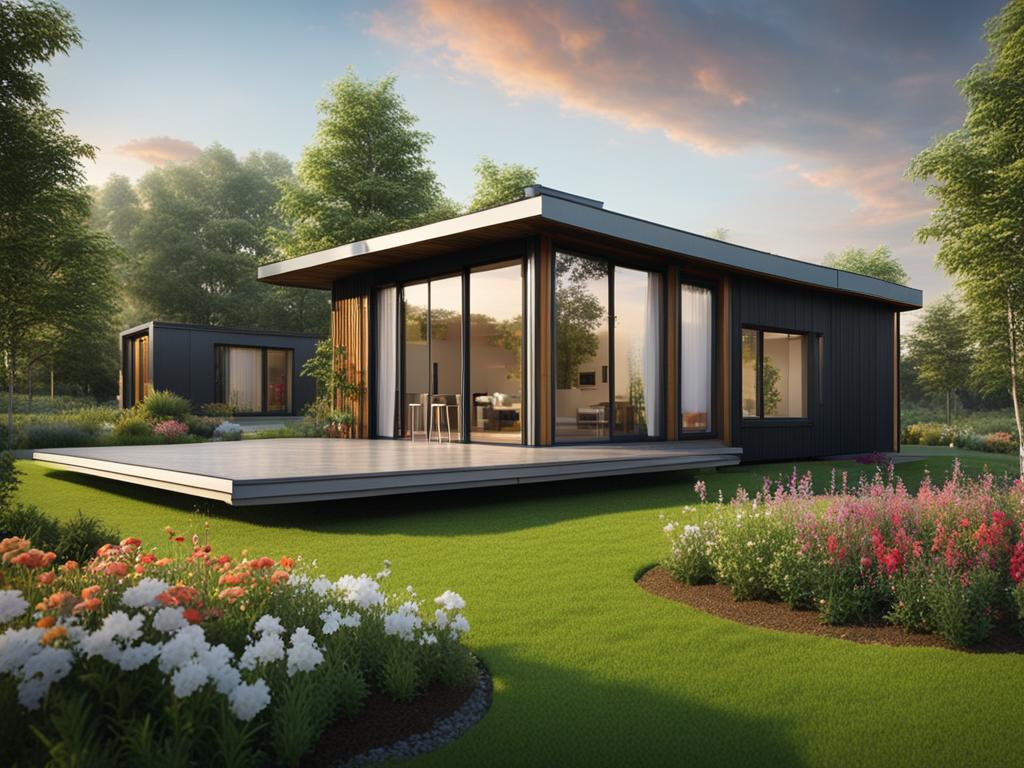
The advancements in technology, along with the increasing popularity of prefabricated homes, will pave the way for a thriving market that addresses both environmental and affordability concerns. These innovative homes combine sustainable construction methods with cutting-edge technology, creating a new era of housing.
In conclusion, the future of housing lies in the prefabricated housing market. With advancements in technology driving progress in environmental sustainability and providing affordable housing solutions, these homes have the potential to transform the way we live. By embracing these advancements and incorporating carbon-neutral features, we can build a better, more sustainable future for generations to come.
Reducing Carbon Footprints: The Rise of Carbon-Neutral Prefabricated Homes
Carbon-neutral prefabricated homes are gaining traction as a sustainable housing solution. These homes are designed to minimize energy consumption through efficient insulation, high-performance windows, and energy-efficient appliances. They utilize eco-friendly materials such as bamboo flooring, reclaimed wood, and recycled steel. In addition, solar panels integrated into the design allow these homes to generate clean and renewable electricity, further reducing their carbon footprint.
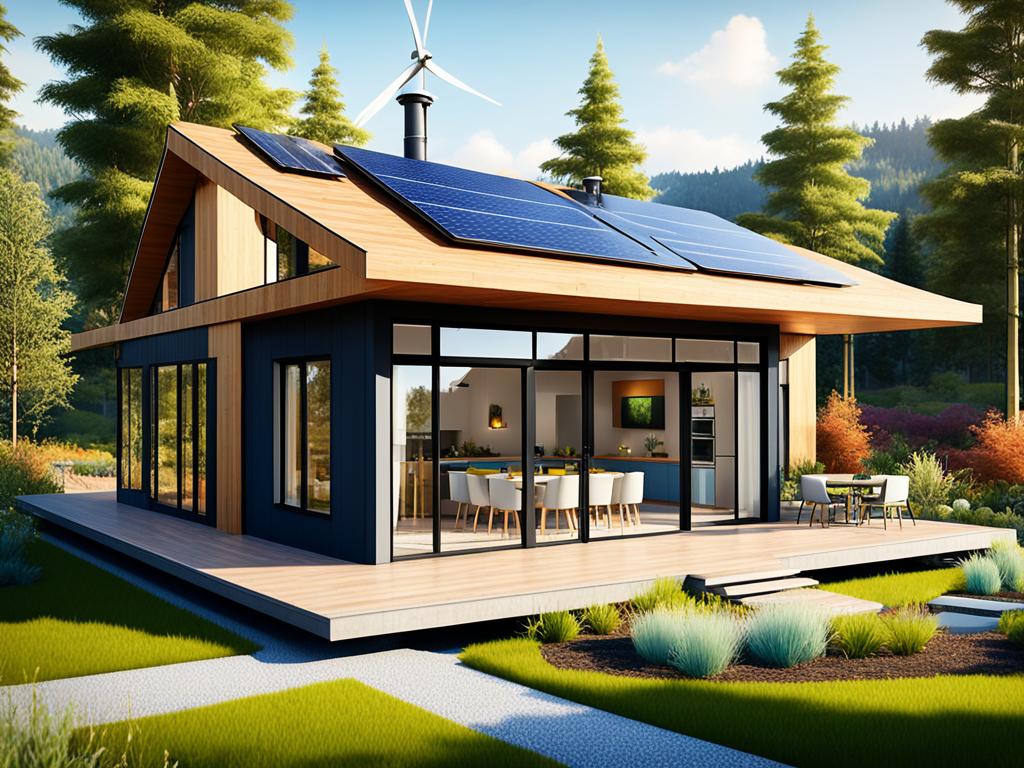
By reducing energy use and utilizing sustainable materials, carbon-neutral prefab homes are playing a crucial role in reducing carbon footprints and promoting sustainability. These environmentally friendly homes not only contribute to a greener future but also offer advantages such as improved energy efficiency, lower utility costs, and enhanced indoor air quality.
Investing in carbon-neutral prefabricated homes is not only a responsible choice for the environment but also a wise financial decision. These homes are constructed with durability in mind, ensuring long-term performance and minimal maintenance requirements. With increasing awareness and demand for sustainable living, carbon-neutral prefab homes are becoming an attractive option for homeowners looking to minimize their environmental impact.
Conclusion
Carbon-neutral prefab homes offer a promising solution for sustainable living in the United Kingdom. These homes minimise their carbon footprint through energy-efficient features, solar power generation, and eco-friendly materials. By embracing carbon-neutral living and eco-friendly construction, we can create a greener and more sustainable future.
The integration of carbon-neutral features in prefab homes not only helps in reducing greenhouse gas emissions but also contributes to achieving sustainability goals. These homes provide benefits such as reduced energy costs, incentives and rebates, and increased resale value, making them an attractive choice for homeowners looking to embrace sustainable living.
With advancements in technology and the growing demand for sustainable housing, the prefabricated housing market in the UK is projected to witness rapid growth. Carbon-neutral prefab homes play a significant role in addressing the housing crisis and meeting the needs of a growing population, while reducing the environmental impact.
FAQ
What are carbon-neutral prefab homes?
Carbon-neutral prefab homes are eco-friendly, sustainable housing options constructed off-site in a controlled factory environment. They are designed to minimize their carbon footprint with features such as energy-efficient insulation, solar power, and smart home technology, resulting in zero carbon emissions.
What are the benefits of prefab homes?
Prefab homes offer advantages such as shorter construction time, cost-effectiveness, and consistent quality. They also provide reduced energy costs, incentives and rebates, and increased resale value due to their integrated carbon-neutral features and sustainable design.
How are prefab homes constructed?
Prefab homes are built off-site and then transported to the home site for assembly. This construction process allows for shorter construction time compared to traditional on-site construction. The controlled factory environment ensures consistent quality and precise construction.
How do carbon-neutral prefab homes minimize their carbon footprint?
Carbon-neutral prefab homes incorporate energy-efficient features such as superior insulation, high-performance windows, and energy-efficient appliances. They also utilize solar panels to generate clean and renewable electricity and employ smart home technology to optimize energy consumption and reduce the environmental impact.
What is the future of prefabricated homes?
The prefabricated housing market is projected to grow rapidly, driven by advancements in technology and increased demand for sustainable housing. These advancements will lead to more customizable designs, improved energy efficiency, and seamless integration of renewable energy strategies in prefab homes.
How do carbon-neutral prefab homes contribute to sustainability goals?
Carbon-neutral prefab homes play a vital role in reducing greenhouse gas emissions and addressing climate change. Their widespread adoption contributes significantly to achieving sustainability goals by minimizing energy consumption, utilizing renewable energy sources, and promoting eco-friendly construction practices.

